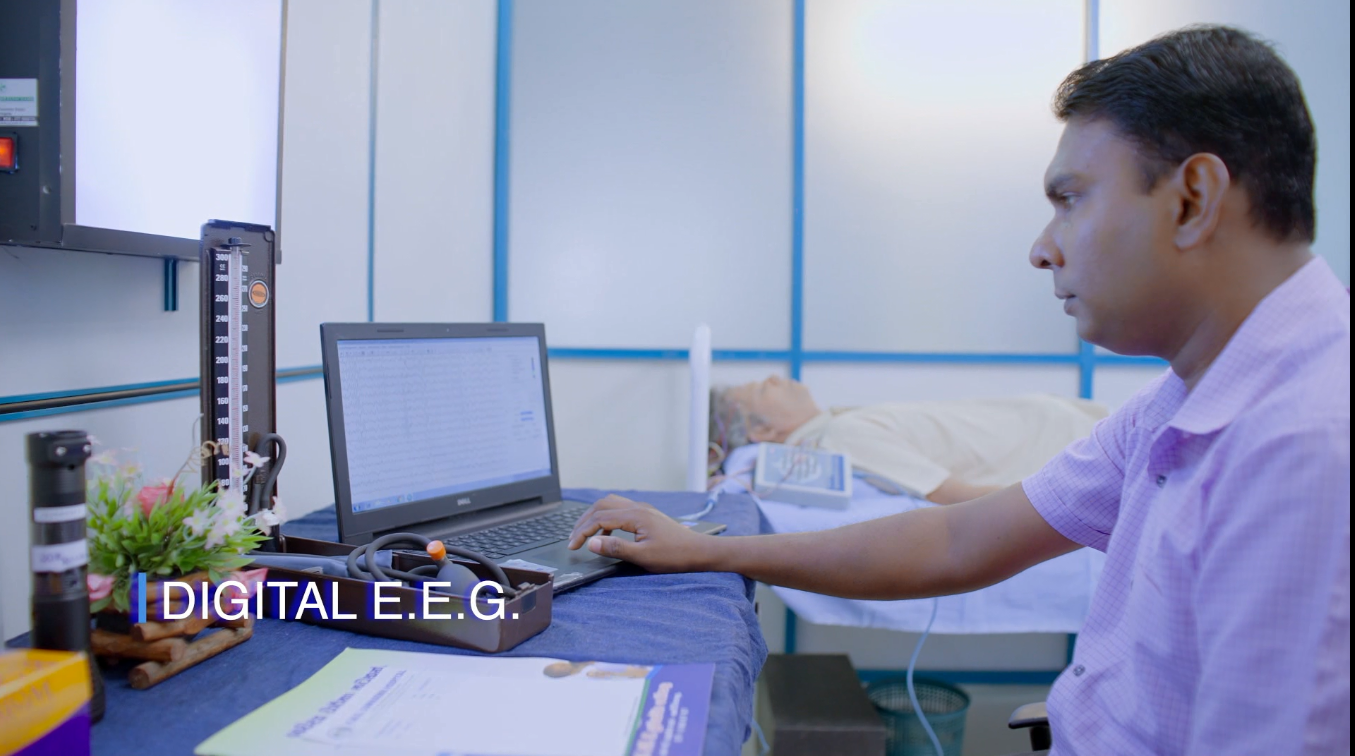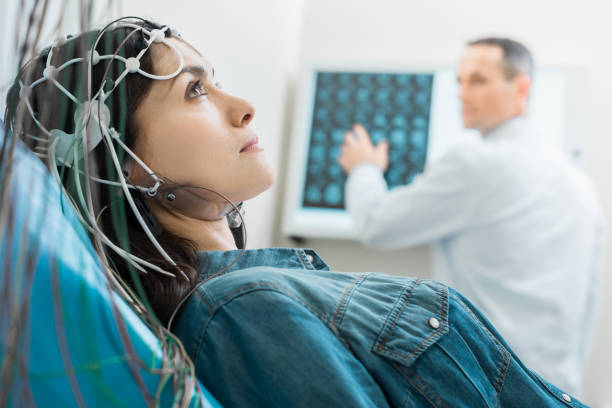
Clinical Applications:
- Diagnosis of Seizure Disorders: EEG is often used to diagnose and classify various seizure disorders, such as epilepsy. It helps healthcare providers assess the type, frequency, and location of abnormal brain activity.
- Brain Function Evaluation: EEG can provide information about brain function and is used in the assessment of conditions like altered mental status, unresponsiveness, and confusion. It helps identify abnormalities in brain activity associated with these conditions.
- Sleep Disorders: EEG is also employed in sleep studies (polysomnography) to monitor brain activity and diagnose sleep disorders like sleep apnea, narcolepsy, and parasomnias.
- Monitoring Brain Health: In some cases, EEG is used to monitor patients during surgery to ensure the brain is functioning normally and to prevent any potential complications.
- Research: EEG is widely used in neuroscience research to study brain activity patterns during various cognitive and emotional states, helping researchers better understand the brain’s functions.
Interpretation:
- EEG recordings typically consist of various types of brain waves, including alpha, beta, theta, and delta waves, each associated with different states of consciousness or brain activity.
- Abnormal patterns, such as sharp waves or spike discharges, can indicate neurological disorders.
- The interpretation of an EEG requires specialized training and experience to recognize normal and abnormal brain wave patterns.
In summary, an EEG is a valuable diagnostic tool used to measure and record the electrical activity of the brain. It is crucial for the diagnosis and management of various neurological conditions, especially epilepsy and seizure disorders, as well as for researching brain functions and monitoring patients during certain medical procedures.
Electroencephalogram (EEG)
An Electroencephalogram (EEG) is a medical test that measures and records the electrical activity of the brain. This non-invasive procedure is used to evaluate the brain’s electrical patterns and is a valuable tool for diagnosing and monitoring various neurological conditions. Here’s a description of how an EEG works and its clinical applications:
Procedure and Equipment:
- Electrodes: During an EEG, small, flat metal discs with attached wires, known as electrodes, are placed on the scalp. These electrodes are positioned at specific locations according to the international 10-20 system, allowing for standardized measurements across patients.
- Recording: The electrodes are connected to an EEG machine, which amplifies and records the electrical signals generated by the brain. The resulting data is displayed on a computer monitor and printed as a graph on paper.
- Activity Monitoring: The EEG records the brain’s electrical activity continuously for a specific duration, usually ranging from a few minutes to an hour or more, depending on the purpose of the test.

